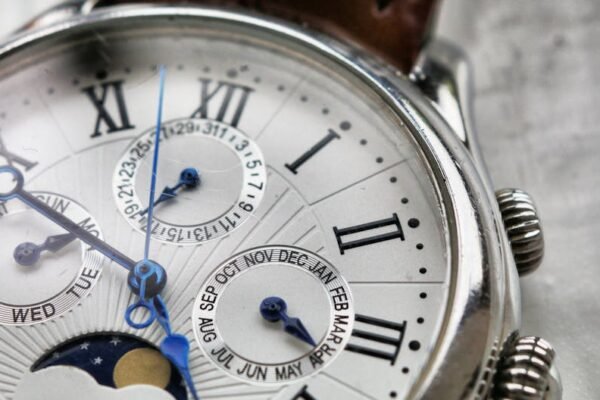Introduction to Precision Styluses

Not all styluses are created equal. Varieties range from basic models meant for casual use to advanced ones designed for professional artists and designers. Understanding the nuances of technology behind these tools, such as pressure sensitivity, palm rejection, and tilt recognition, is crucial for making an informed choice. The evolution of stylus technology ensures a wide range of options catering to different needs and budgets.
The importance of a precision stylus cannot be overstated for professionals in graphic design, digital art, and similar fields. These devices not only improve the accuracy of digital work but also significantly reduce the time taken to complete tasks. Moreover, for general users, a precision stylus can transform the way one interacts with any touchscreen device, making the experience more intuitive and engaging.
In the quest to find the perfect stylus, there are various factors to consider, including compatibility with your device, comfort and ergonomics, battery life, and additional features. This post aims to guide you through these considerations, ensuring you select a stylus that meets your specific needs and preferences.
Key Features of High-Quality Precision Styluses
Understanding the key features of high-quality precision styluses is essential. The most advanced styluses on the market today offer features such as pressure sensitivity, allowing artists to vary line thickness and opacity with minimal effort. Additionally, tilt recognition can mimic the effects of real-life drawing tools, adding a new dimension to digital art.
Palm rejection technology is another critical aspect, as it enables users to rest their hand on the screen without causing unintended input. This feature is indispensable for artists and note-takers who require precision and comfort during prolonged use. Furthermore, the build quality, including the material and feel of the stylus, plays a significant role in the overall user experience.
Compatibility with various devices also cannot be overlooked. While some styluses are designed to work exclusively with a particular brand or model, others offer universal compatibility, making them more versatile. This is particularly important for users who frequently switch between devices or work with multiple platforms.
Battery life is another consideration. Many modern styluses are rechargeable, with battery life ranging from hours to months depending on usage patterns and the specific device. A stylus with a long battery life or easy charging options can significantly enhance usability and convenience.
Considering Comfort and Ergonomics
The comfort and ergonomics of a precision stylus are vital, especially for users who spend long hours sketching, drawing, or writing on their devices. The stylus’s weight, grip, and balance can significantly affect its usability. A well-designed stylus should feel like an extension of your hand, offering a natural and comfortable drawing or writing experience.
Ergonomic features such as a soft grip or a contour that fits your hand can reduce fatigue and increase precision. Some styluses also come with customizable buttons, enabling users to assign shortcuts to their most frequently used functions, thus streamlining their workflow.
Aesthetics, while not as crucial as functionality, can also play a role in the choice of a stylus. A sleek, stylish stylus can be a reflection of personal style and make the creative process more enjoyable. However, it’s important to remember that functionality should always take precedence over appearance.
When it comes to comfort and ergonomics, there is no one-size-fits-all solution. What feels comfortable to one user might be uncomfortable for another. Therefore, it’s advisable to test different styluses when possible or read reviews from other users to make an informed decision.
Compatibility and Connectivity

Compatibility and connectivity are key considerations when choosing a precision stylus. It’s essential to ensure that the stylus you’re considering is compatible with your touch screen device, whether it’s a tablet, smartphone, or digital drawing pad. Some styluses are designed specifically for use with certain devices or operating systems, offering seamless integration and functionality.
Connectivity options vary among styluses, with most connecting to devices via Bluetooth. This wireless connection usually facilitates additional features such as pressure sensitivity and palm rejection. However, some devices may require a proprietary connection, limiting the stylus’s compatibility with other devices.
For users who prefer not to worry about charging their stylus, there are battery-free options available. These styluses often use electromagnetic resonance (EMR) technology, which draws power directly from the device’s screen, eliminating the need for a battery. While this option offers convenience, it’s important to check the compatibility of this technology with your device.
It’s also worth considering the setup process and whether the stylus requires specific drivers or software to function. Some styluses are plug-and-play, while others may require additional steps before they can be used. Understanding these aspects can prevent unnecessary frustrations and ensure a smooth experience from the start.
Selecting the Right Stylus for Your Needs
Choosing the right precision stylus comes down to identifying your specific needs and preferences. Are you a professional artist or designer requiring advanced features such as pressure sensitivity and palm rejection? Or are you looking for a basic stylus for everyday use, such as navigating apps and taking notes? By clearly defining your needs, you can narrow down your options and find a stylus that fits your lifestyle and workflow.
Consider the type of work you’ll be doing with the stylus. If you’re into digital art, a stylus with high accuracy, pressure sensitivity, and tilt recognition may be essential. For general users, a stylus with basic functionality might be sufficient. Additionally, think about how often you’ll be using the stylus and whether portability is a concern. A compact, lightweight stylus might be ideal for those who are always on the go.
Don’t forget to factor in your budget. Precision styluses can range from relatively inexpensive to high-end models with advanced features. While it’s tempting to opt for the cheapest option, consider the stylus’s longevity, build quality, and whether it meets your requirements. Investing in a high-quality stylus can enhance your experience and prove to be more cost-effective in the long run.
Finally, read reviews and seek recommendations from other users, especially those with similar needs and preferences. User reviews can provide invaluable insights into a stylus’s performance and reliability, helping you make a well-informed decision.





